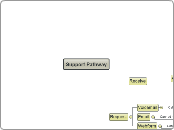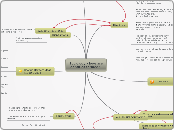Ergonomics
"Fit for Human Use"
Matches Task, Equipment & Work Environment with the operators Capabilities (Physique, abilities, information handling and workload capacities) and Needs (health, safety, comfort, well-being, mental stimulation, social contact & minimisation of stress) NURSES
Sometimes refered to as Human Factors or Human Centered Design
MEMORY PALACE: FC101. SURFACE TO AIR, CHEMICAL BROTHERS.
Human-Machine Interaction
Ubiquitous Computing
Clothing / Fabrics
Physical interaction Paradigms
Direct Sensors
Speech
Touch
Gesture
Diverse environments
Task Analysis
Understanding the Task & the User.
Breaking down in to interactions, task elements, sub tasks etc. Or more specifically: an action (manual) or decision (cognitive).
Anthropometry
Dynamic data collection
photographic analysis
fitting trials
Static data collection
Applying Physical Ergonomics
Stage 6 - Identify priorities
Stage 5 - Take each design feature & consider it against each level of the Hexagon model
Stage 4 - Identify Limiting Users & their needs
Stage 3 - Tasks -> Sub-tasks -> Arrange in Order -> split into Cognitive & Manual tasks
Stage 2 - Identify Tasks
Stage 1 - Identify Users
Workspace Design
Hexagon Model - Benedyk, Woodcock and Harder
external factors
work setting
workplace
workstation
operator
Upper Limb Disorders
Procrustean Approach to design states that Humans are very good at adapting to their environment
Examples: Data input operator with a deadline may ignore wrist discomfort
RSI / WRULD / CTD
Behavioural
Posture
Repitition
Anthropmetric fit
Force
Defining the target population
Users may change
permanently
aging
training
growth
temporarily
fatigue
Other users: maintainers, cleaners, assemblers etc
95th percentile
Not average User
The Limiting User
Risk & Risk Assessment
If user is affected = user costs; well-being, effectiveness & satisfaction
If system is affected = Reduction in task quality, efficiency, increased dev costs & training
General Links
Compile a list of references providing techniques and standards for physical ergonomics in the context of interactive devices & workplaces.
Lots more found in Rachels course booklet, page 24
http://www.system-concepts.com/articles/updates-on-standards/
https://www.hse.gov.uk
https://www.ergonomics.org.uk
Books
Evaluation of Human Work
Wilson & Corlett
Bodyspace - Anthropometry, Ergonomics and the Design of Work
Stephen Pheasant & Christine M. Haslegrave









